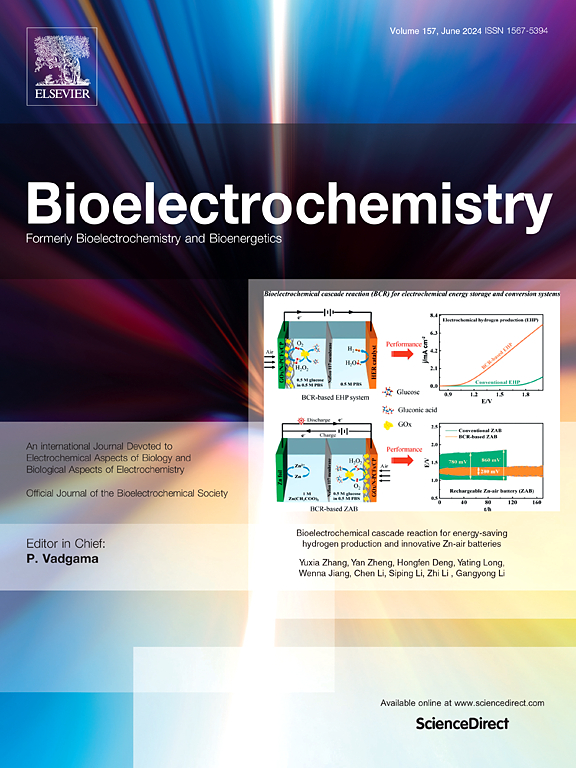Dynamics of stress-induced c-fos expression in the rat prelimbic cortex: lessons from intronic and mature RNA and protein analyses
IF 3.6
2区 医学
Q1 NEUROSCIENCES
引用次数: 0
Abstract
Despite the extensive use of c-fos as a marker of stress-induced neuronal activation, key aspects regarding its dynamics of expression remain poorly characterized. In the present study, we assessed in the prelimbic cortex of adult male rats the immediate transcriptional response of c-fos by measuring the heteronuclear (hn)RNA and mature (m)RNA expression by double fluorescent in situ hybridization as well as the c-Fos protein using immunofluorescence (FOS). We quantified in three different experiments the number of c-fos hnRNA+, mRNA+ and FOS+ neurons under basal conditions, immediately after different periods of immobilization stress (IMO), and after a recovery period. Our results indicate that stress induced a large increase in the number of positive neurons for all markers analyzed, each displaying a different time course. Moreover, our findings indicate that measuring the intensity of signal per neuron also provides relevant information. In addition, we report an increased number of FOS+ neurons after only 8–15 min of IMO, suggesting a surprisingly fast initiation of protein translation. Finally, the maturation from c-fos hnRNA+ to mRNA+ might depend on the duration and/or intensity of stress-induced activation. Our findings contribute to a better understanding of the dynamics of stress-induced c-fos expression and underscore the importance of examining multiple molecular components when using c-fos as a proxy of neuronal activation.
应激诱导大鼠前边缘皮层c-fos表达的动态:内含子和成熟RNA和蛋白质分析的教训
尽管c-fos被广泛用作应激诱导神经元激活的标记物,但其表达动力学的关键方面仍然缺乏表征。在本研究中,我们通过双荧光原位杂交检测异核(hn)RNA和成熟(m)RNA的表达,以及免疫荧光(FOS)检测c-fos蛋白的表达,评估了成年雄性大鼠前边缘皮层c-fos的即时转录反应。在三个不同的实验中,我们量化了基础条件下、不同时期固定应激(IMO)后和恢复期后c-fos hnRNA+、mRNA+和FOS+神经元的数量。我们的研究结果表明,应激诱导所有标记的阳性神经元数量大量增加,每个标记显示不同的时间过程。此外,我们的研究结果表明,测量每个神经元的信号强度也提供了相关信息。此外,我们报告了IMO仅8-15分钟后FOS+神经元数量的增加,这表明蛋白质翻译的启动速度惊人。最后,从c-fos hnRNA+到mRNA+的成熟可能取决于应激诱导激活的持续时间和/或强度。我们的研究结果有助于更好地理解应激诱导的c-fos表达的动力学,并强调了在使用c-fos作为神经元激活的代理时检查多种分子成分的重要性。
本文章由计算机程序翻译,如有差异,请以英文原文为准。
求助全文
约1分钟内获得全文
求助全文
来源期刊

Neurobiology of Stress
Biochemistry, Genetics and Molecular Biology-Biochemistry
CiteScore
9.40
自引率
4.00%
发文量
74
审稿时长
48 days
期刊介绍:
Neurobiology of Stress is a multidisciplinary journal for the publication of original research and review articles on basic, translational and clinical research into stress and related disorders. It will focus on the impact of stress on the brain from cellular to behavioral functions and stress-related neuropsychiatric disorders (such as depression, trauma and anxiety). The translation of basic research findings into real-world applications will be a key aim of the journal.
Basic, translational and clinical research on the following topics as they relate to stress will be covered:
Molecular substrates and cell signaling,
Genetics and epigenetics,
Stress circuitry,
Structural and physiological plasticity,
Developmental Aspects,
Laboratory models of stress,
Neuroinflammation and pathology,
Memory and Cognition,
Motivational Processes,
Fear and Anxiety,
Stress-related neuropsychiatric disorders (including depression, PTSD, substance abuse),
Neuropsychopharmacology.
 求助内容:
求助内容: 应助结果提醒方式:
应助结果提醒方式:


